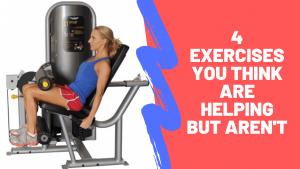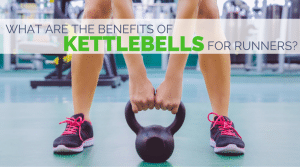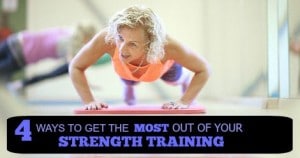One of the most important functions of muscles and tendons in running is to store energy.
Much like a pogo stick, your body can store energy from impact and release it to propel your body forward. A large proportion of your propulsive energy actually comes from the energy stored in your legs from the previous impact. This is why you can leap higher and longer if you do a “countermovement” before—swiftly bending your knees before rising to jump allows you to reach much higher into the air than slowly bending your knees, then jumping up.
While this “stretch-shortening cycle” has been known about for some time, standardized methods of training this reflex are fairly new. Improvements in your muscles’ ability to elastically store energy have obvious implications for runners, as more stored energy would mean you could maintain a given pace for less overall energy. That is, your efficiency would improve.
So, this week, we will be looking at plyometric exercises for runners, the jump-style training that improves your muscle elasticity and improves your running economy.
The science of plyometric exercises for runners
Initial standardized research on the subject of plyometrics for runners was published in early 2000s.
Plyometric improvements in running economy at an easy pace
In one study by Amanda Turner, Matt Owings, and James Schwane at the University of Texas-Tyler, eighteen male and female recreational runners were split into experimental and control groups. Both continued their regular running training, but the experimental group added a six-week plyometric training routine to their schedule three times a week. Most runners were not particularly “talented” by elite standards; their velocity at VO2 max (roughly two-mile race pace) averaged around 7:00 miles.
However, after the six-week training intervention, the experimental group who implemented plyometrics demonstrated a 2.3% improvement in their running economy at speeds between 10:00 and 7:30 mile pace—meaning they used less oxygen at these speeds than before the plyometric training. The control group, meanwhile, demonstrated no significant changes in running economy.
Turner’s study has its shortcomings: The runners were not well trained, so perhaps the improvement was simply from the increase in training. Additionally, the data collection was less than perfect, and most serious runners don’t want to be more efficient at ten-minute mile pace, they want to race better! Finally, some of the subjects were men and others were women. This drastically increased the range of the absolute fitness of the runners in the study—some runners were literally twice as fast as the others!
Plyometric improvements in running at faster paces
Some of these issues were addressed in a study published by Robert Spurrs, Aron Murphy, and Mark Watsford at the University of Technology, Sydney in Australia.
Seventeen men who ran between 37 and 50 miles a week underwent a 6-week plyometrics program similar to that of Turner et al. Eight men were in the experimental group, which did two sessions of plyometrics a week for the first three weeks, then three sessions per week the following three weeks. The control group continued normal training. Spurrs’ study also included a 3km time trial before and after the 6-week intervention in addition to the customary evaluations of VO2 max and running economy.
After the plyometric training, the experimental group of runners who implemented plyometrics showed improvements on the order of 2.7% in their jumping ability, 3k time, and running economy at 8, 7, and 6 minutes per mile.
While these results are promising, the experimental setup resulted in some unfortunate differences in the experimental and control groups. Even though the subjects were assigned randomly, the experimental group averaged 10:15 for their initial 3k time trial, while the control group averaged almost a minute faster. Again, it’s possible that the experimental group was simply not in as good of shape as the control group and benefited from the increased training load.
Plyometric improvement in running efficiency for faster runners
Fortunately, a stronger experimental design came out in support of plyometrics training just three years later.
A study published by Philo Saunders and colleagues at RMIT University (also in Australia) was able to recruit fifteen very fit distance runners for a study on plyometrics.3 The runners in Saunders et al. averaged near 8:30 for their 3k best—nearly two 4:30 miles back-to-back (some were substantially faster). The runners averaged 67 miles a week, with a few doing upwards of 90. This study is special because it’s normally very difficult for exercise physiologists to convince national- and international-caliber athletes to alter their training for a long period of time.
In Saunders et al., the plyometric training block was nine weeks long, consisting of three sessions per week: some in a gym and some on grass. While there was no time trial before or after to evaluate race performance, the experimental group demonstrated a 4.1% improvement in running economy at 5:20 mile pace and a nonsignificant trend toward improvement at 6:00 and 7:00 mile pace.
The authors interpreted this as an indication that plyometric training is more beneficial at higher speeds, since the impact forces are much higher.
Additionally, since there was no change in the maximal oxygen uptake ability (VO2 max), Saunders et al. pointed to the muscles, not the heart or blood vessels, as the cause of the improvement in economy. While the blood delivered the same amount of oxygen to the muscles before and after the 9-week training program, the plyometrics-trained runners could go faster with it.
How to include plyometrics in your training
This series of studies has made a fairly convincing case for the merits of plyometric exercises in a training program. But what the research has not made clear, at least not yet, are the specifics of what exercises are best and when they ought to be done in your training cycle.
Luckily, we’ve done that work for you in creating our Strength Training for Runners program. We not only have the most running-specific plyometric routine, but we also have specific prescriptions for how to include plyometrics (along with core work, preventive exercises, and general strength training) into your current running schedule. Get the details by visiting out strength training for runners site now.
In general, plyometric training is probably best done during the lead-up to your “competitive season” or your big race. While you probably want a few days’ rest between a plyometrics workout and a race, you also don’t want to wait too long to race after stopping the program, since your gains will likely fade with time. Plyometrics exercises should not done year-round, rather included in the race specific portion of your training (usually the last 4-6 weeks).
You should first build a fairly good level of general strength before beginning a plyometrics routine. If you haven’t been doing some weight lifting or body-weight strength exercises like lunges and squats, starting up with hurdle jumps and single-leg bounding is a recipe for injury.
Plyometric training can be a powerful tool for improving your running economy, but treat it with the respect it deserves: it’s a high-intensity, high-impact workout that should be done when fresh and reasonably strong already.



 <
<




